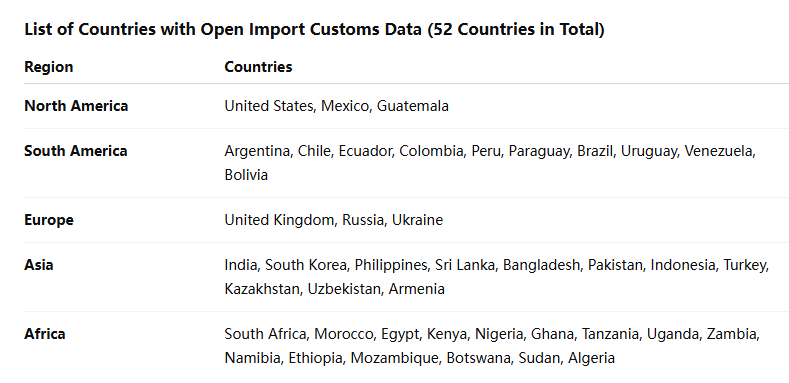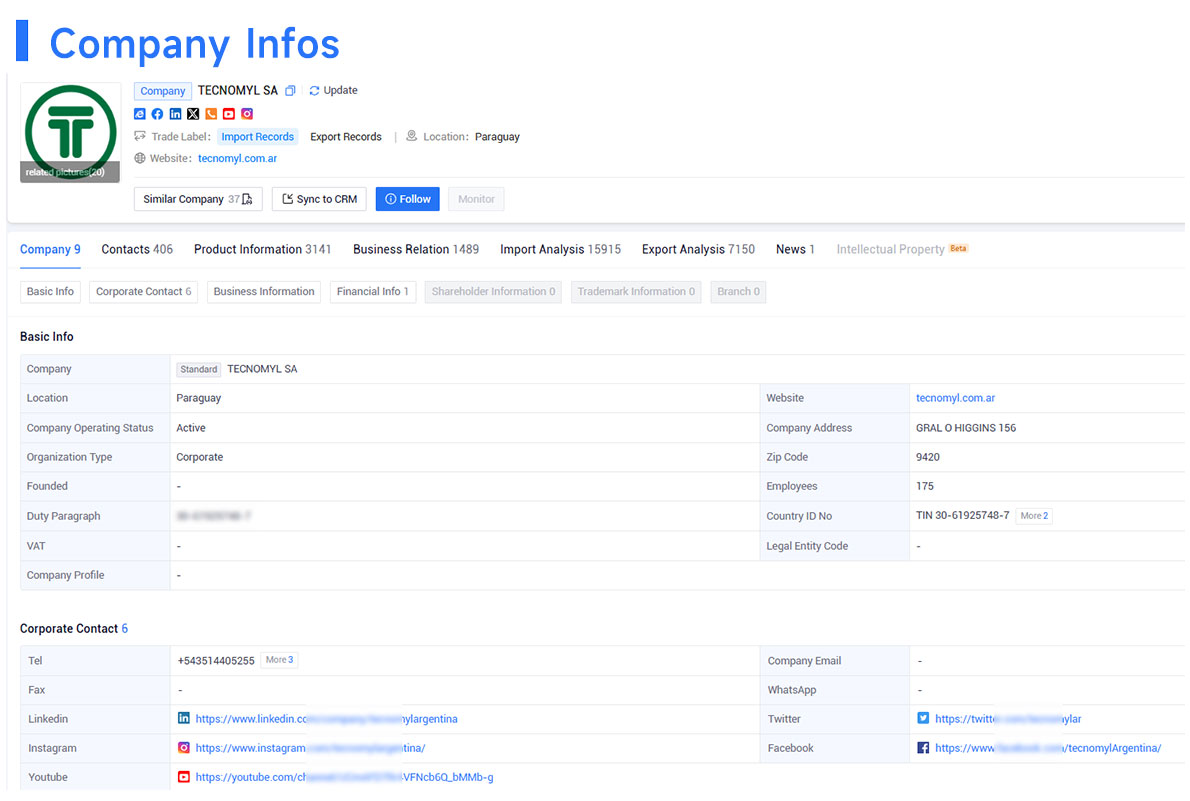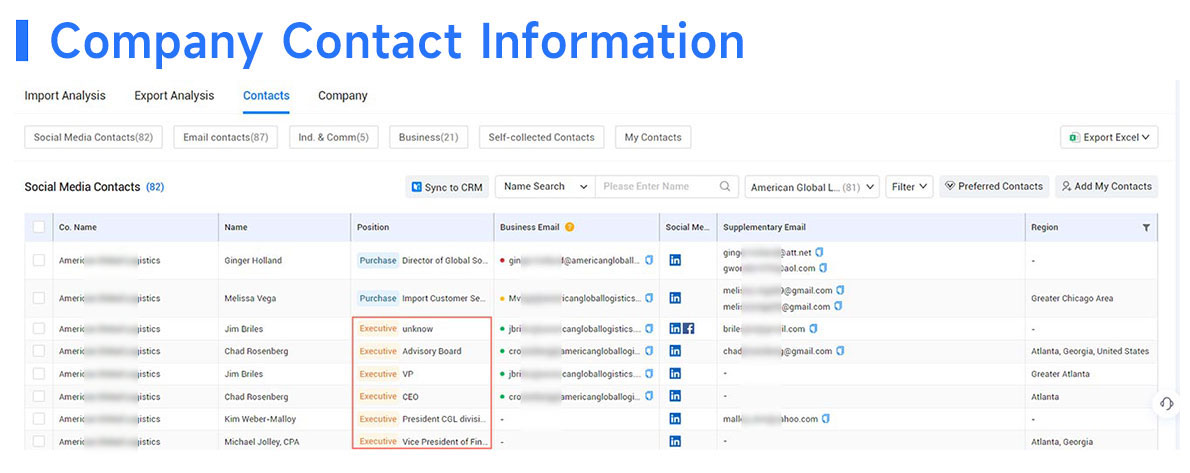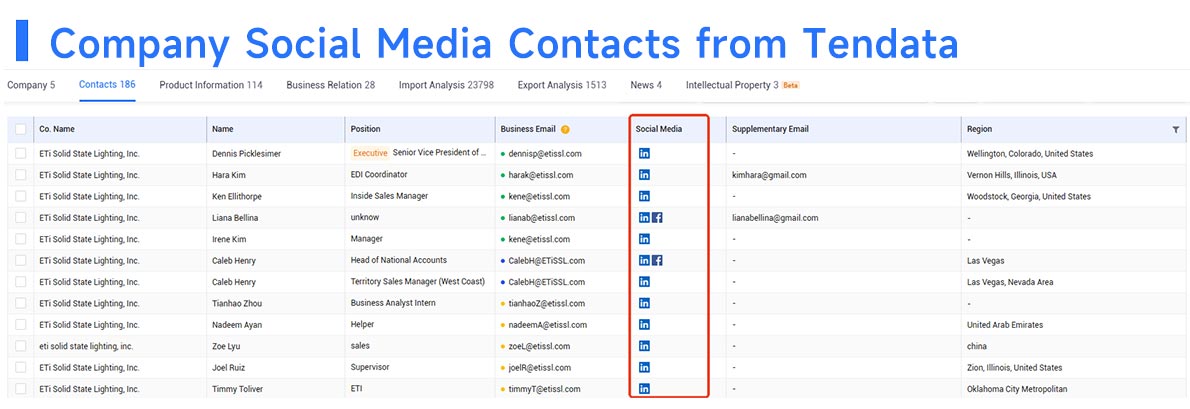 Trade Data Provider
Trade Data Provider
 2025-06-10
2025-06-10
The global trade data services market is currently flourishing with a wide range of providers. In addition to official sources of global trade data, numerous commercial data companies offer related services, with prices ranging from a few hundred yuan to tens of thousands.
So, where exactly does global trade data come from?

1. Official Customs Authorities
The core source of global trade data comes from import and export customs declarations collected by national customs authorities. This typically includes:
·Product Information: Product name, HS code, specifications, quantity, weight, value, etc.
·Trade Party Information: Importers, exporters, consignees/shippers.
·Logistics Details: Port of origin/destination, transportation method (sea/air/land).
·Tariff Data: Declared value, tax rate, duties paid.
Note:
·Official customs websites (e.g., China General Administration of Customs) usually publish only aggregated statistics (such as industry-level trade trends), not detailed transaction-level data (like importer/exporter names and trade records).
·Some countries (e.g., the U.S.) may mask company names and provide only anonymized codes.
2. International Organizations & Multilateral Agreements
Some international organizations consolidate trade data submitted by member countries. However, these datasets often lag in timeliness:
·UN Comtrade: Provides global macro trade statistics, usually delayed by several months.
·WTO Trade Data: Shared by member countries for policy analysis.
·Regional Trade Databases: Examples include Eurostat (EU) and the ASEAN Trade Repository.
3. Commercial Data Providers (Third-Party Trade Data Companies)
These providers collect, integrate, and enhance global trade data through legitimate means (e.g., government partnerships, purchasing raw data), offering value-added services.
·Representative companies: Tendata Global Trade Data, among others.
·Data sources include:
(a) Open trade data countries (like the U.S., India—about 52 countries in total).
(b) Indirect data from non-open countries, estimated via bills of lading and logistics records.
(c) Business directories and trade show data to supplement importer/exporter information.

Features:
(a) Highly structured data
(b) Industry-, company-, or product-level search
(c) Integration with company profiles, supply chain analytics, market forecasting, etc.
(d) Typically available via paid subscription.
Contact Information Access
Global trade data providers often emphasize the completeness and accuracy of contact information. However, no single method can cover 100% of global import/export contacts. Effectiveness varies by industry and company. A demo is usually needed to fully understand coverage.
Main sources of contact info:
(a) Contact details embedded in trade data itself.
(b) Matching contacts from business directories or yellow pages.
(c) Partnering with international data firms (priced per contact).
(d) Using services like D&B or Kompass accounts to retrieve company details.
(e) Scraping emails from official websites or domain names.
>> Get Customer Contact Information Through Tendata <<



4. Ports & Logistics Companies
·Port Authorities: Some ports publish cargo throughput or vessel docking records (e.g., Shanghai Port, Rotterdam Port).
·Shipping Lines & Logistics Platforms: Provide bill of lading data, which can be cross-referenced with trade records.
5. Other Supplementary Sources
·Foreign Exchange Records: Cross-border banking transactions can indirectly reflect trade flows.
·Corporate Disclosures: Publicly listed companies may reveal trade partnerships in annual reports or supply chain disclosures.
How to Choose a Global Trade Data Service?
·Official Data: Ideal for macro-level analysis, but limited in detail.
·Commercial Data: Best for precise client development, but data accuracy should be validated.
·Port/Logistics Data: Useful for cross-checking and verifying trade authenticity.
Recommendation: Always review a data demo before purchase to assess coverage, update frequency, and accuracy of contact information—ensuring the solution aligns with your business goals.
You May Also Be Interested in These Contents:
1. The Best 10 Free Trade Data Platforms to Make Import & Export Easier!
2. What is the Best Global Trade Database?
3. Free Import and Export Data Online
Category
Leave Message for Demo Request or Questions


 T-info
T-info T-discovery
T-discovery

 My
Tendata
My
Tendata Market Analysis
Market Analysis Customer
Development
Customer
Development Competitor
Monitoring
Competitor
Monitoring Customer Relationship
Customer Relationship



















